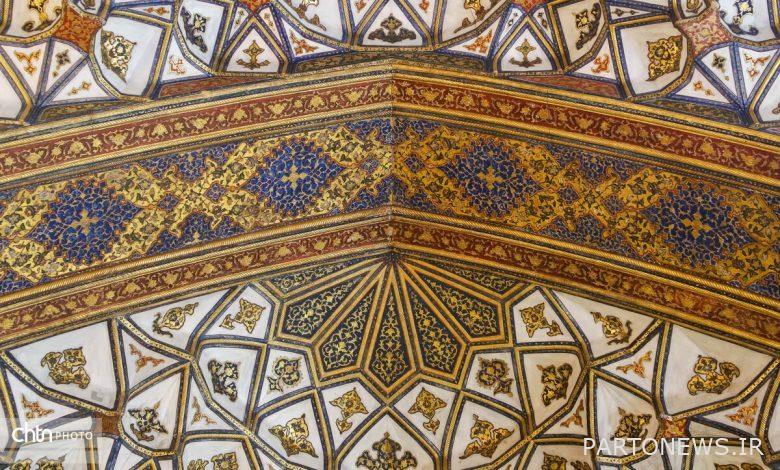Arya Heritage News Agency – Ashraf Hall; The jewels of Iran’s halls

“Talar Ashraf” is the remaining building of the palaces of the Safavid era, which is located in the Dolatkhane area and next to other palaces and buildings such as the Covered Hall, Hasht Behesht Palace, Pusht Mokhon Palace, Rakibkhane, Chehlsetun, Tawheed Khane and Timuri Hall, a collection of magnificent palaces of that period. It is a history. This mansion has a large hall in the middle of the building and side rooms. The main hall has a high arched ceiling (like the ceiling of the sky) with very exquisite decorations of moqrans work and train with gold coating and colored and azure plasterwork, which has not been seen in any of the buildings of the Safavid period. At the peak of the ceiling of the central hall, there is a revolving sun or round seal with 24 golden rays, which is placed in the middle of a larger twelve-pointed sun.
Although some attribute the name of the word “Ashraf” to “Afghan Ashraf”, according to the available documents and the studies of researchers, “Ashraf Hall” was built during the time of Shah Abbas II and was completed during the period of his successor, Shah Suleiman. During the Safavid period, this hall was used as a residence of the king and a royal shrine, and during the Qajar period, it became the house of Sarm al-Dawlah (commander of the soldiers of Isfahan). According to the research of some researchers, “At the beginning of the First World War (1914 to 1918), Ashraf Hall was used as a fodder warehouse, and after that, one of the military units and Russian soldiers was stationed there, and at that time, the plaster casts and carvings of the palace They are hidden under a coating of plaster.
About 80 years before and after the destruction of the buildings on the left and right of the hall of the Archeology Department, by restoring this hall, its destruction was prevented, and then the building was ready and used for the establishment of the Department of Education and after that, the Health and Civil Registry Department. For some time, it was changed to the Culture and Art Department, then the Education Department, and finally to the Governor’s Office of Ceremonies. This historical and exquisite building was registered as one of the national works of Iran on the 15th day of 1310 with registration number 106.

